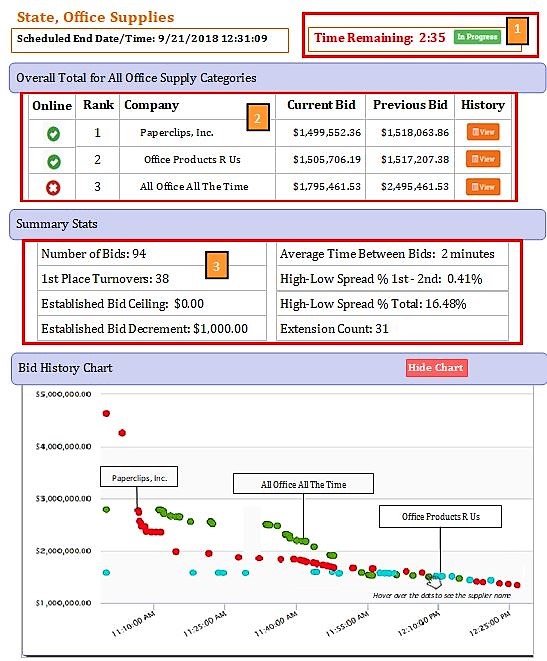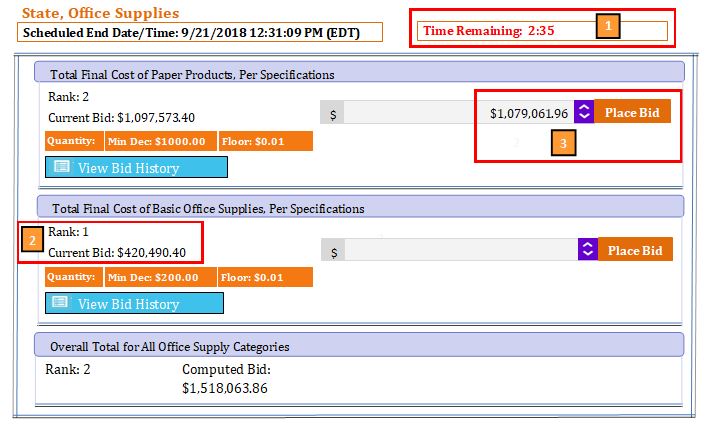Are you wanting to cut costs without sacrificing quality?
How do you know you are getting market value on your purchases?
Reverse Auction could be your answer.
What is a Reverse Auction?
Reverse auctions (also called eAuction, eProcurement, eSourcing, sourcing event, procurement auction, eRFP/eRFQ, B2B Auction) are a premier tool of procurement for businesses and government entities.
eBridge’s reverse auction process is unique due to its highly buyer-centric design with no software, no risk and no cost to our buyers.
In a reverse auction, vendors compete to supply a product or service by offering lowering bids to the buyer. eBridge facilitates an online, real-time dynamic auction that enhances competition among qualified vendors. This competitive procurement process finds true market value for goods and services. Watch a demo.
Buyer View
1) Time Remaining – Auctions are typically scheduled for 15 minutes. If a bid is placed by any vendor with less than 3 minutes left, the clock resets to 3 minutes. The auction ends when 3 minutes has passed without a bid from any of the participating vendors.
2) Vendor Information – Buyers can see who is competing, their rank, current bid, previous bid, bid history, and if that vendor is logged into the system.
3) Real Time Data – Buyers can see the number of bids, 1st place turnovers, high-low spread between 1st and 2nd lowest vendor, and extension count in real time.
Vendor View

1) Time Remaining – Vendors see how much time is remaining. If a bid is placed by any vendor with less than 3 minutes left, the clock resets to 3 minutes.
2) Current Bid/Rank – Vendors can see only their current bid and rank. They can't see how many other Vendors are bidding or their price.
3) Place Bid – Vendors can enter a new lowering bid amount.
eBridge delivers immediate bid tabulations following each event
